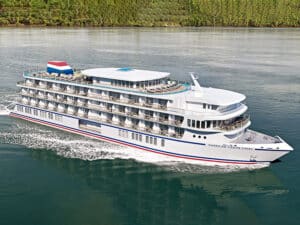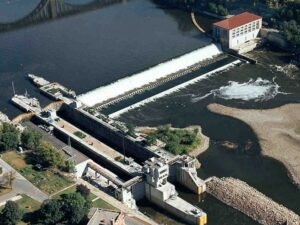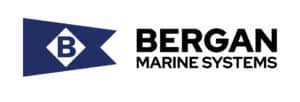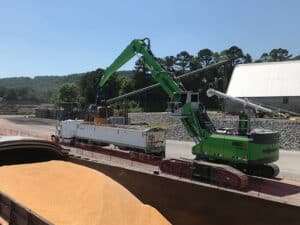
NTSB issues report on triple towboat sinking
Written by Nick Blenkey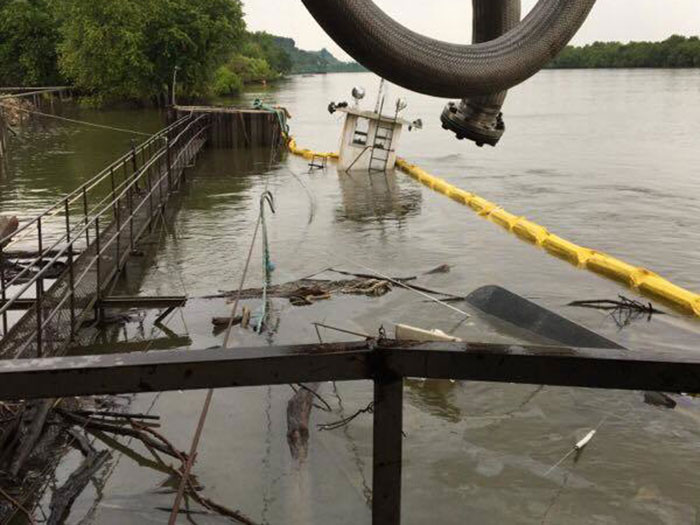
USCG Photo
The National Transportation Safety Board has issued its report on a July 5, 2019, incident in which three towboats and an unnamed deck barge—all owned by Hex Stone Inc., Louisiana, Mo.—that sank in the Illinois River at Mile 20.7 while moored at the Jersey County Grain Company facility in Hardin, Ill. No crew members were aboard any of the vessels.
Approximately 2,800 gallons of diesel fuel were released into the river and mostly recovered. Damage to the vessels, deck barge, and facility totaled an estimated $920,000.
Four vessels were involved in the incident: the 47-foot-long towing vessel Chattie Sue Smith, built in 1963, the 55-foot-long Mary-R, built in 1964; the 54-foot-long Mary Fern, built in 1978; and the 50-foot-long Teddi B, built in 1989, which was moored with the other vessels on the day of the accident but did not sink. The towboats, all equipped with twin propellers, were moored with a 50-foot-long-by- 18-foot-wide steel deck barge.
The Chattie Sue Smith had been operating as a fleeting vessel locally since January 2019, and the Teddi B was operated at the dock facility. The Mary-R and Mary Fern were not operational at the time of the sinking.
On July 5, 2019, the four vessels and the deck barge were moored on the right descending bank of the Illinois River at mile 20.7.The mooring arrangement consisted of, upriver to downriver, the Mary Fern; outboard of it, the Teddi B; off the Mary Fern’s stern was the Mary-R; astern of it was the unnamed barge; and outboard of the barge was the Chattie Sue Smith. Mooring lines and wires connected the towing vessels and barge together, with the Mary Fern and deck barge tied off to mooring cells with mooring lines.
There was no one at the facility or on any of the vessels at the time.
At 0654, the Hardin Fire Protection District was dispatched to the Jersey County Grain Company following an initial report made by a crewmember aboard a passing towing vessel who witnessed the vessels sinking. Employees from Hex Stone arrived on scene before the fire department. The company’s river operations manager notified the Coast Guard regarding the sinking as well as an environmental spill response company concerning diesel fuel in the water.
Subsequent to the initial response and pollution prevention efforts, between July 12 and 19, a salvage company recovered the three towboats that had sunk and the deck barge. An inspection evealed no reported signs of water ingress from the three towboats. Aboard the barge, however, several small holes were found on the deck, the sides (about 6–12 inches from the bottom), and the bottom plating. An open watertight hatch (manhole) on the deck of the barge, which provided access to the midbody compartment for power cords and discharge hoses, was found during salvage operations. The barge was equipped with two electrically operated submersible bilge pumps powered from shore, one in each of the midbody compartments, that were designed to be activated automatically by float switches. Both pumps were tested after the sinking for proper function: one was found to be inoperable.
In its analysis, NTSB notes that, based on a review of the barge’s condition, the holes likely had been present for a significant amount of time and were the source of the flooding. The side and bottom holes would have allowed water to continuously flood the barge’s compartments, which required the automatic bilge pumps to dewater the spaces at frequent intervals.
PROBABLE CAUSE
The National Transportation Safety Board determines that the probable cause of the sinking of the towing vessels along with the deck barge, was the deteriorated condition of the barge and the infrequent monitoring of the vessels, which allowed the barge to flood and sink, ultimately pulling down the moored towing vessels.
The report concludes with this caution:
Company Oversight of Inactive Vessels
To protect vessels and the environment, it is good marine practice for owners and operators to conduct regular oversight and maintenance of vessel and barges, even during lay-up periods. Oversight should include periodic testing and maintenance of dewatering equipment.
- Download the full report HERE.

